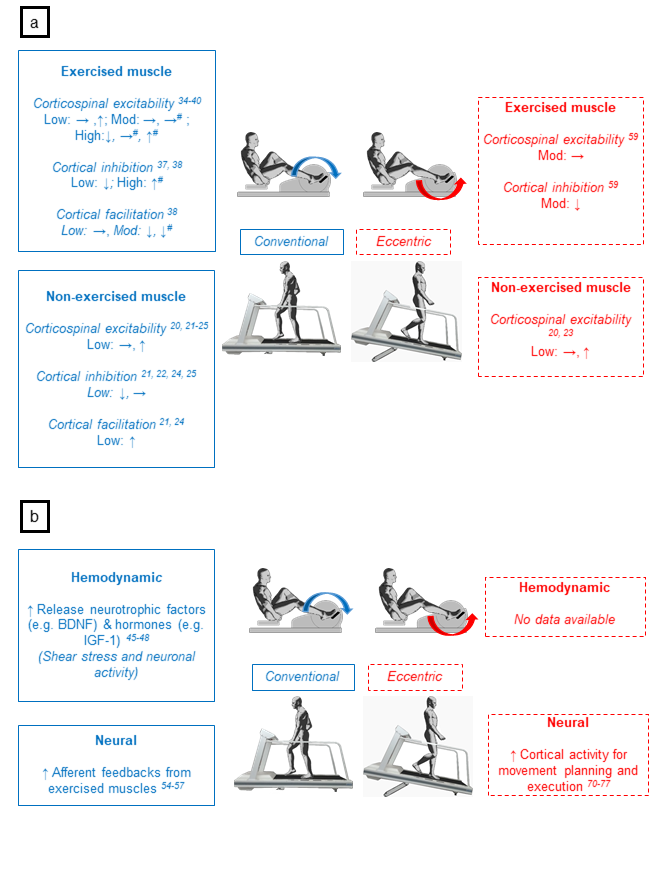Conventional locomotor exercise, such as cycling or walking, induces motor learning-like neuroplastic changes (i.e., decreased cortical inhibition and/or increased facilitation, assessed in a muscle using transcranial magnetic stimulation). These effects seem to be a consequence of humoral processes notably resulting from hemodynamic solicitation. Unfortunately, pathological populations may not be capable of exercising at sufficient intensities to trigger these beneficial neuroplastic modulations and an alternative method is needed. As it can be inferred from non-invasive brain and peripheral stimulation studies, a high neural activity can directly result in neuroplastic changes. Similarly, eccentric exercise (i.e., active lengthening of the muscle), during which individuals develop the same force or power as conventional exercise at lower cardiorespiratory intensities, requires a high brain neural activity. As single-joint eccentric exercise was decreased cortical inhibition and increased cortical facilitation, locomotor eccentric exercise may be even more potent by pooling neural and, maybe, hemodynamic neuroplastic processes. Further studies are required to understand the influence of locomotor exercise characteristics (e.g., intensity, duration) on exercise-induced neuroplasticity.

